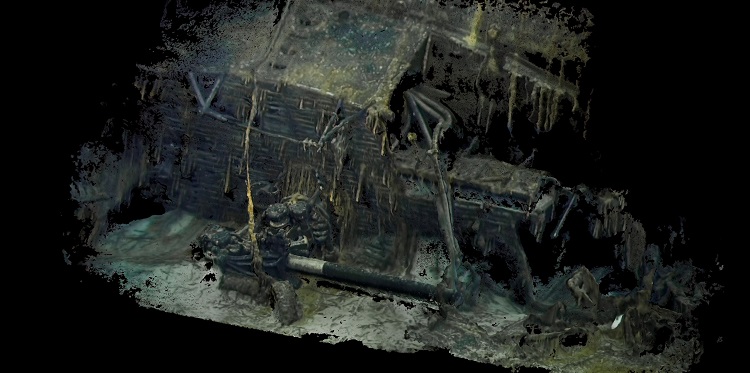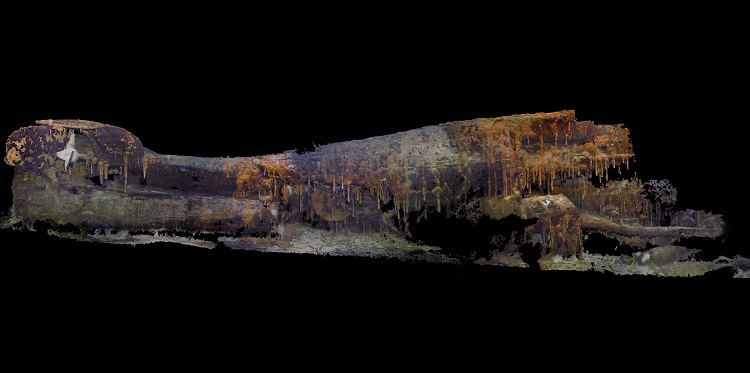The Final Resting Place of 49 U.S. Sailors Confirmed
After almost 75 years, ocean explorer Tim Taylor and his "Lost 52 Expedition Team" officially discovered the final resting place of the 49 Sailors of the U.S. submarine S-28 (SS-133) off Oahu, Hawaii. The U.S. Navy recently validated the identity of the wreck, which Taylor located in 2017.
July 4, 2019 marks the 75th anniversary of the loss of the submarine, which was conducting exercises at the time she disappeared.

D Photogrammetry Imagery of the deck gun and bridge of the USS S-28 lost 75 years ago on July 4th, 1944.

3D photogrammetry Imagery of the stern section of the USS S-28 lost 75 years ago on July 4th, 1944.
The keel of USS S-28 was laid down in April of 1919, just months after the end of the First World War. Commissioned on December 13, 1923, the S-Class submarine spent 16 years taking part in various Navy exercises in the Caribbean and eventually the Pacific.
When Pearl Harbor was attacked on December 7, she was being overhauled at Mare Island Naval Shipyard outside of San Francisco, California. She was one of several S-boats put into service in World War II and was initially sent to Alaska to defend the Aleutians against a possible Japanese invasion. By mid-November, S-28 arrived in Pearl Harbor and for the next seven months trained in the waters around the island.
On July 3, 1944, S-28 embarked on an antisubmarine warfare training exercise off the coast of Oahu, Hawaii. During the training, communication became sporadic, and the boat sent her last communication to the Coast Guard cutter Reliance the evening of July 4. Navy's search of the area did not reveal the location of the submarine, and two days later, a diesel oil slick appeared in the area.
Later, a Navy Court of Inquiry could not determine the cause of the loss. During her service during World War II, she completed six war patrols and earned one battle star.
S-28 rests in approximately 8,700 feet of water, which made the location of the ship impossible due to technological limitations of the era.
Following World War II, the U.S. tested ordnance and scuttled U.S. and Japanese ships in the vicinity of the wreck site. Records indicated that her sister ship, USS S-35, had been scuttled in that same area. Finding the subtle differences between the two series of S-class submarines demanded some technical expertise and analysis. Through Taylor's research, paired with historical archives, the Naval History and Heritage team were able to positively identify the wreck comparing design differences. Records revealed the hulls had uniquely different cowling covers on the forward bow planes.
The investigators also considered some likely superstructure modifications and the probability that deck guns were removed from the S-35 before it was scuttled as possible indicators. Ultimately, however, the cowlings provided the evidence the team needed to make the final confirmation.
Taylor's team utilized advanced photogrammetry to create imaging that allows them to research the site long after they have returned to the dock. The data produced by their expedition was key in helping to confirm that we were looking at the S-28 and not the S-35.
Taylor, CEO of Tiburon Subsea Services, Inc., and director of non-profit Ocean Outreach, Inc. has a reputation for working with the latest in undersea technology and with the top specialists in underwater exploration. This is his fourth U.S. WWII submarine discovery since 2010 and is part of his ongoing "Lost 52 Project". The ongoing project is supported by STEP Ventures.
